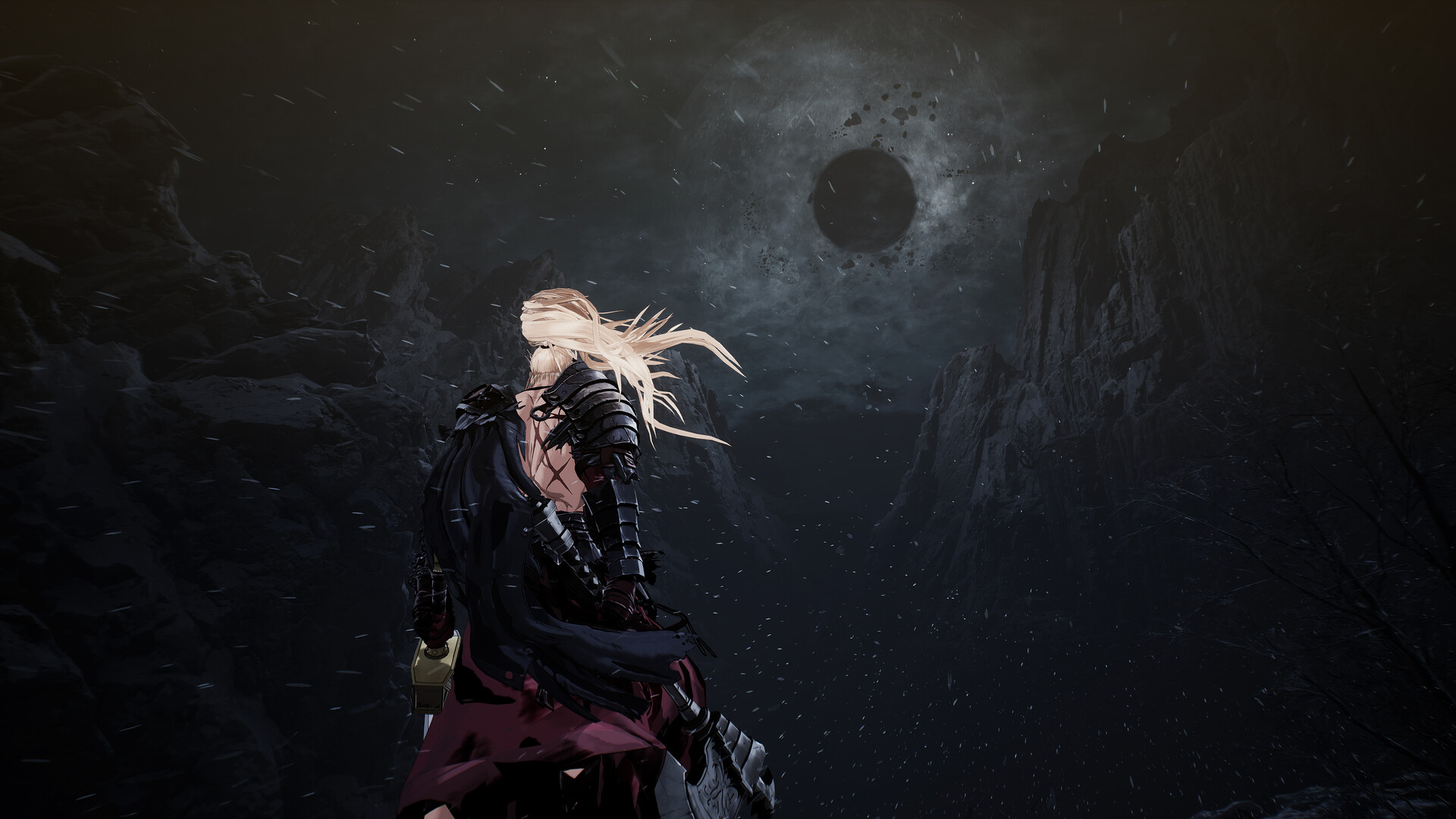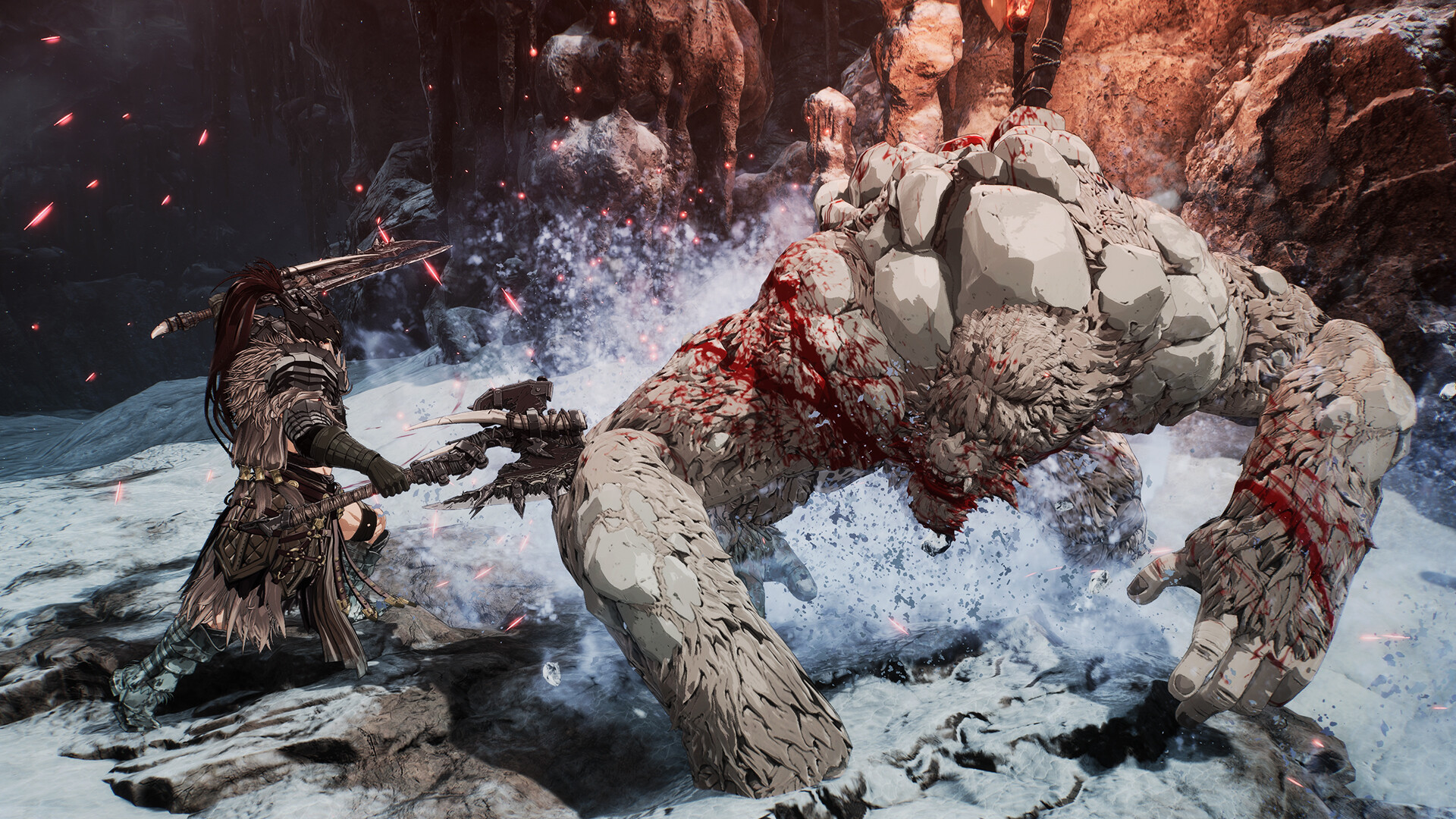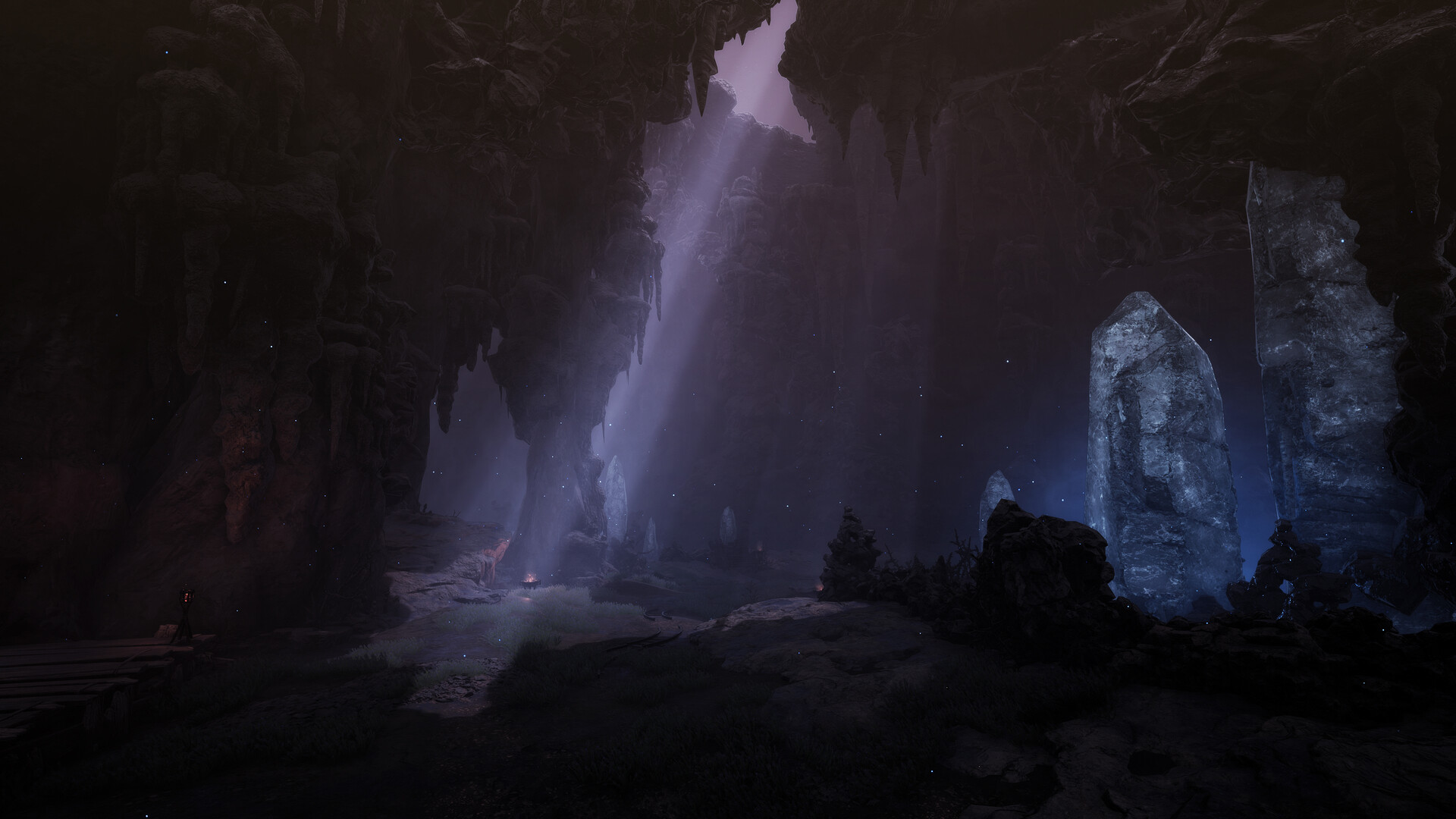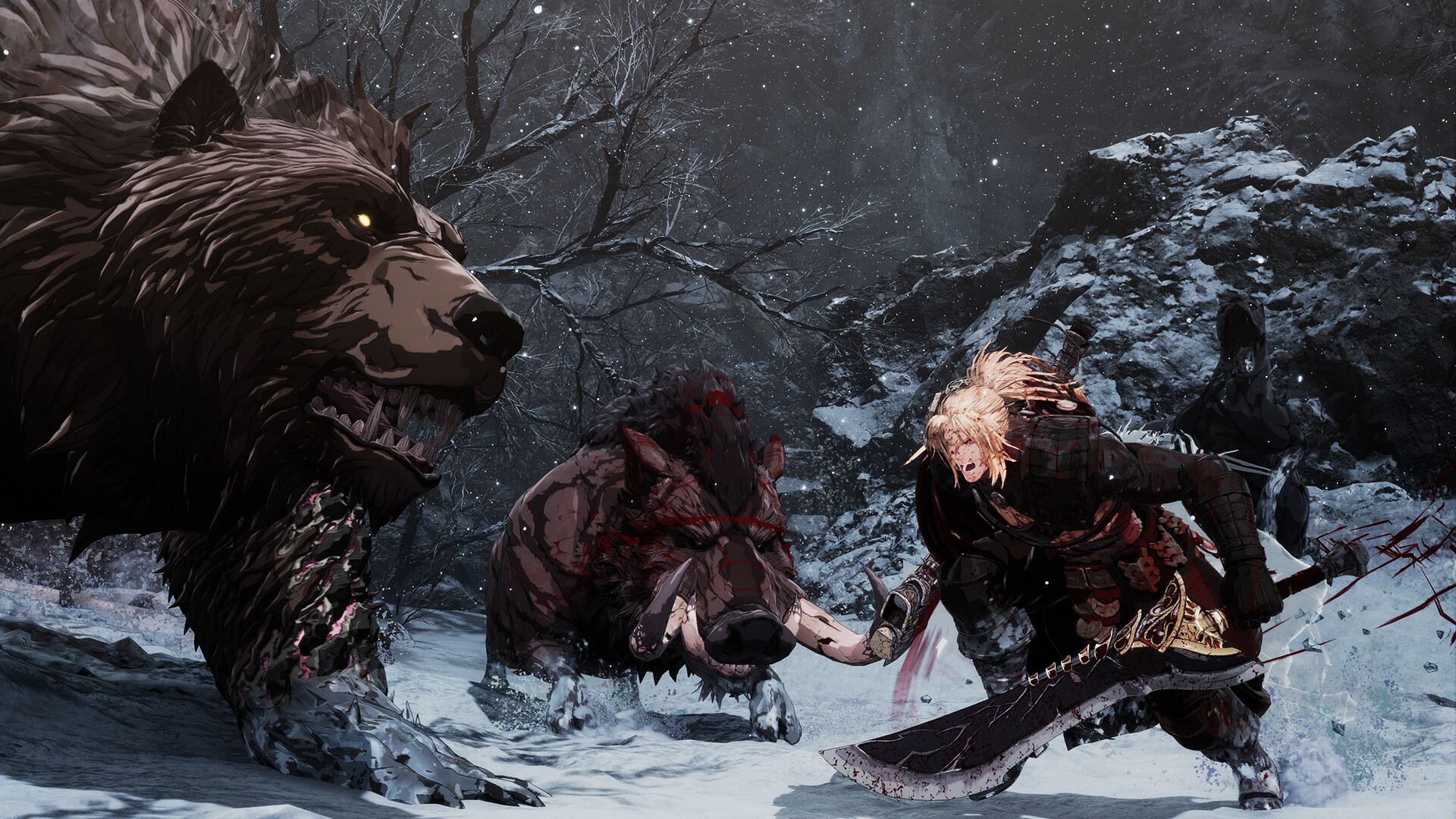
Title “The First Berserker: Khazan” catches the attention of fans of “Dungeon and Fighter,” as it delves into one of the enigmatic characters from “Dungeon Fighter Online” – Khazan himself. While this game is technically a prequel, it also presents an alternate version of his story (as shown by events not currently part of “DFO” canon). After playing the demo and being impressed by the combat and aesthetics, most players are excited to follow his journey. Keep in mind that while the demo is excellent, the rest of the game may not reach those same heights.
The tale of Khazan unfolds following a betrayal. Having vanquished the Berserk Dragon, Hismar, and earning hero status from the Pell Los Empire, he is unexpectedly tormented by the Emperor and banished. Simultaneously, his dearest friend Ozma, and most trusted ally, has been put to death. Consequently, driven by a desire for retribution, Khazan seeks vengeance. In his weakened condition, the enigmatic Blade Phantom strikes during a convoy ambush in Heinmach Pass, taking control of Khazan.

Beyond occasional hints of his desire for retribution towards the Emperor, there is minimal exploration or growth in Khazan’s character. We catch glimpses of past battles against the Berserk Dragon, but overall, I know very little about Khazan as an individual.
In the end, the pair come to an agreement: Khazan will utilize the Phantom’s power to eliminate the Emperor and his traitors, while simultaneously providing the Phantom with a means to accomplish assignments for their master, Charon. It appears that there may be more to the Phantom than initially perceived, and Khazan must also handle various complications arising within the Empire.
Months ago, I discussed how revenge combined with anger provides a distinctive insight into a character’s mind. After all, Khazan experienced intense and prolonged trauma – his limbs were tortured, and his dearest friend and ally was slain. This is a deep-rooted wound that deserves careful examination and could create captivating drama. Moreover, there’s significant contrast between Khazan’s past loyalty to the Empire and his current actions of ruthlessly killing its citizens.
While there are occasional hints of his revenge plot against the Emperor, there’s relatively little insight into Khazan as a character. His personality remains sparsely detailed, with only the knowledge that he dislikes betrayal. This is surprising given the title’s promise to delve deeper into his character. Instead, it seems more like an Epic Medieval Fantasy Adventure featuring Khazan from the Dungeon & Fighter series, rather than a comprehensive exploration of his personality.
Additionally, the fact that his quest for revenge becomes aimless following the initial stages, focusing more on introducing underdeveloped characters, doesn’t enhance the storyline. The plot includes predictable twists and turns, some obvious to even casual players of DFO. Although it manages to connect all these scattered elements into a conclusive purpose and finale, it falls significantly short of what one might expect from Khazan’s brutal path of vengeance.
In the performance, particularly Ben Starr’s role, they strive diligently to add depth and significance to these situations. One might assume Starr would excel given his previous portrayal of Clive in Final Fantasy 16, but it seems his acting range is somewhat limited and weakened in this case, which unfortunately reduces my interest in Khazan even further. The frequent displays of anger, heavily promoted, are persistent, yet they don’t seem to be substantially developed within Khazan’s character.

Perhaps the reason could be that many missions take place in dimly lit, monotonous caves, leaving little room for visual excitement. Alternatively, it might be that the locations I anticipated were less captivating than expected because of the way the story was structured.
In the fantasy world and with enchanting tones, the cast successfully captivates you. Notably, even minor characters who scream in horror as they experience the gruesome effects of Lacrima are worth mentioning. However, the plot itself could use some work to maintain player interest. While much of the dialogue is passable, there’s nothing remarkable or memorable about it. Sadly, some lines are so poorly written that they warrant a second look, and no matter how superb the voice-acting is, it can’t salvage those issues.
In a sense, I find fault with the structure of the narrative. After being introduced to your home base, The Crevice, you embark on missions and return. Interactions with the gradually expanding cast of characters may ensue, but they often lack distinctive qualities or opportunities for development. Their primary purpose seems to be offering Khazan additional quests or serving as vendors. While there’s an option to choose different dialogue options, these exchanges seldom yield intriguing information or stimulate meaningful conversations, let alone foster growth for Khazan.
In terms of gameplay, the mission structure and the way new areas unfold are reminiscent of both Nioh 1 and 2. You’ll often find yourself embarking on a quest, possibly interacting with a non-essential character, and then continuing your journey. The unique selling point of the Nioh series lies in its historical setting in Japan during a specific time period. Although the narrative flow between key events might not always be seamless, the presence of real-life figures, their actions, and the overall context provide a strong foundation for immersion.
In the unique, imaginative world of Khazan, newcomers may find it quite difficult, especially if they are not familiar with Dungeon and Fighter. Even seasoned fans might struggle, as they would only recognize the names of locations and foes without much additional context to help them along.
In a more simplified and conversational tone, the developers at Neople try to provide additional context through notes and letters about certain levels, but it doesn’t fully clarify the disturbing scenes of corpses or experiments. This could be due to the dark, dimly colored caves where many missions take place, which don’t offer much visual storytelling. Additionally, some locations I was excited to explore didn’t live up to my expectations because of their story setup. Lastly, the environmental storytelling feels unengaging and reinforces the straightforward mission-based structure.

Let’s discuss what could be seen as the most advantageous part of this journey – the battle scenes. The game, “The First Berserker“, resembles Souls-like games, and it leans more towards the combat mechanics in Nioh, especially the Burst Counters introduced in its sequel. This means that you can unlock special abilities and combine them using Skill Points as you progress.
In summary, the design of the levels is acceptable. With options like knocking down ladders for quick routes, flipping switches to deactivate barriers and climbing up to reach an elevator back to a Blade Nexus (essentially, checkpoints), it’s not structurally unique compared to other games in this genre. I can’t tell if that single enemy in the room is isolated or if there are others hidden behind doors ready to attack as soon as I enter. It follows the formula of Souls-like games, but it’s starting to feel overly familiar and predictable.
While the tempo is well-balanced, Neople introduces some intriguing variations, particularly with the use of verticality and environmental dangers. The levels initially follow a straight path but later open up to offer multiple routes and optional activities such as Soulstone Cores or Elite Enemies that yield extra XP and equipment. If only the side missions were more engaging or diverse in their objectives. They can sometimes feel brief – I’d have preferred fewer, if it meant more immersive tasks and narratives instead.
In the middle of the tale, you’ll notice a pattern where similar foes like dragons, bandits, skeletons, soldiers, and spiders recur frequently. Brace yourself for numerous encounters against these standard adversaries, but there will be a stretch where you’ll find yourself fighting them quite often. However, towards the end of the game, things take an exciting turn as unusual creatures from unexpected realms make their appearance, introducing new strategies and abilities to keep combat engaging.
As a seasoned gamer, let me share my thoughts on the game’s combat system, which I find to be one of its most exhilarating features.
There’s a definite Sekiro-esque influence in the emphasis on parrying and breaking through an enemy’s poise or Fortitude. This enables you to wear down enemies and bosses for Brutal Attacks. Unlike some games, though, there’s no infinite stamina for sprinting and attacking, nor is there a Ki Burst to replenish what you’ve spent on attacks.
The outcome presents an ongoing balance between the conventional Souls-like elements and those wishing for a more chaotic approach, often referred to as unga-bunga. This tension is equally fascinating and harsh since successfully parrying attacks saves your vital stamina used for attacking. In this design, merely blocking feels inadequate, but it eases the learning curve during early stages. As you advance with leveling up, finding better equipment, unlocking passives, and mastering your chosen weapon, the combat in Khazan settles into a rhythm that continuously pushes your skills to their limits.

The rewards aren’t particularly thrilling, mostly boosting stats. However, set bonuses could be something worth striving for, even though they too are primarily stat boosts; only a few offer genuinely distinctive skills.
In simpler terms, as you progress, you’ll encounter persistent attack penalties that bypass your impressive dodging abilities. However, when faced with such situations, evading becomes particularly useful, especially if you’ve mastered moves like Moonlight Stance, which retaliates during Brink Dodges. Transitioning between attacks and skills (provided you have the energy) is satisfying as well. Initially, Phantom Form may seem ineffective, but it eventually proves useful, requiring a shift in strategy beyond the standard “Rage Mode.
It’s unfortunate that the way stats scale makes you limited to using just one type of weapon. At first, changing your stats can be challenging because the necessary item doesn’t often drop, and you won’t learn how to craft it until later in the game. Although each weapon has its unique characteristics, using the same type for such a long time inevitably increases the feeling of repetition.
I’m thrilled to say that “The First Berserker” doesn’t hold back when it comes to its main boss encounters. The battle with Viper, initially a graceful dance, transforms into a brutal second phase filled with an intense, almost suffocating atmosphere, particularly when the lights dim and only the glow of its eyes signals imminent attacks. And let’s not forget Maluca, who seems like just another Elite bandit at first but unleashes nitoryu and Judgment Cut End for a stylish showcase of devastation. Sure, some bosses might seem over-powered at times, but even those who share similarities in their overall strategy have distinct nuances.
In simpler terms, not every boss battle is flawless – there’s one that looks amazing but the targeting system fails and the constant enemies with grab attacks are frustratingly annoying. I was let down after my initial encounter with a Phantom (similar to the excellent Blade Phantom fight), as I didn’t get to face subsequent ones, instead finding items to unlock them. However, I haven’t encountered all of them yet, so maybe there are more challenging battles ahead. The side missions mainly pit regular enemies against you as bosses though.
In essence, “The First Berserker” predominantly revolves around acquiring loot. You’ll find yourself drowning in loot, which often renders crafting insignificant for a considerable part of the game because something better or rarer is likely to follow shortly after. The loot, while abundant, isn’t particularly engaging, usually offering stat boosts. Set bonuses can serve as goals, but they too are essentially stat bonuses, with only a few offering truly distinct abilities. Ultimately, your gameplay is shaped more by the weapon type and skills rather than the loot, giving it a flat, one-dimensional feel.

Although I wouldn’t rank it among the genre’s top performances, Neople still offers an enjoyable action RPG that surpasses many of its closest rivals. While some players might crave more depth, others may find themselves immersed in it as if it were a familiar Souls-like experience before eventually moving on.
In terms of its presentation, I must say that Neople’s treatment of the anime aesthetics in Khazan is something I truly appreciate. They manage to strike a balance between sleekness and grunge, which I find quite intriguing. However, the muted colors and dim lighting in certain environments sometimes make it challenging to fully appreciate all the finer details. There are indeed moments where visual overload becomes a bit too much to handle.
Despite some minor hiccups during certain movements, such as Khazan stumbling when stepping down from a slope, the overall balance between macabre and sleek elements is impressive, with the animations being exceptionally clean. Additionally, the music used, while often underestimated, significantly enhances the dark fantasy atmosphere by complementing the narrative where weight may be lacking, making it more impactful.
Although I harbor some reservations about “The First Berserker: Khazan“, it’s not a poorly made game. Action RPG enthusiasts, particularly those familiar with the “Nioh” series, will appreciate its rich content. However, beyond its engaging combat, impressive boss battles, and aesthetics, it seems to lack depth – it can be formulaic in certain areas, repetitive in others, and its plot and character development, especially for Khazan (given it’s a “What if” scenario within the established “Dungeon and Fighter” lore), are somewhat unsatisfying.
While it might not reach the pinnacle of its genre, Neople offers a satisfying action RPG that surpasses many similar titles. Some players might yearn for more depth, while others find themselves immersed in an experience reminiscent of a Souls-like game before eventually moving on.
This game was reviewed on PlayStation 5.
Read More
- Clash Royale Best Boss Bandit Champion decks
- Clash Royale December 2025: Events, Challenges, Tournaments, and Rewards
- Ireland, Spain and more countries withdraw from Eurovision Song Contest 2026
- Clash Royale Witch Evolution best decks guide
- Best Hero Card Decks in Clash Royale
- Clash Royale Furnace Evolution best decks guide
- Mobile Legends December 2025 Leaks: Upcoming new skins, heroes, events and more
- ‘The Abandons’ tries to mine new ground, but treads old western territory instead
- JoJo’s Bizarre Adventure: Ora Ora Overdrive unites iconic characters in a sim RPG, launching on mobile this fall
- Mobile Legends X SpongeBob Collab Skins: All MLBB skins, prices and availability
2025-03-24 18:58